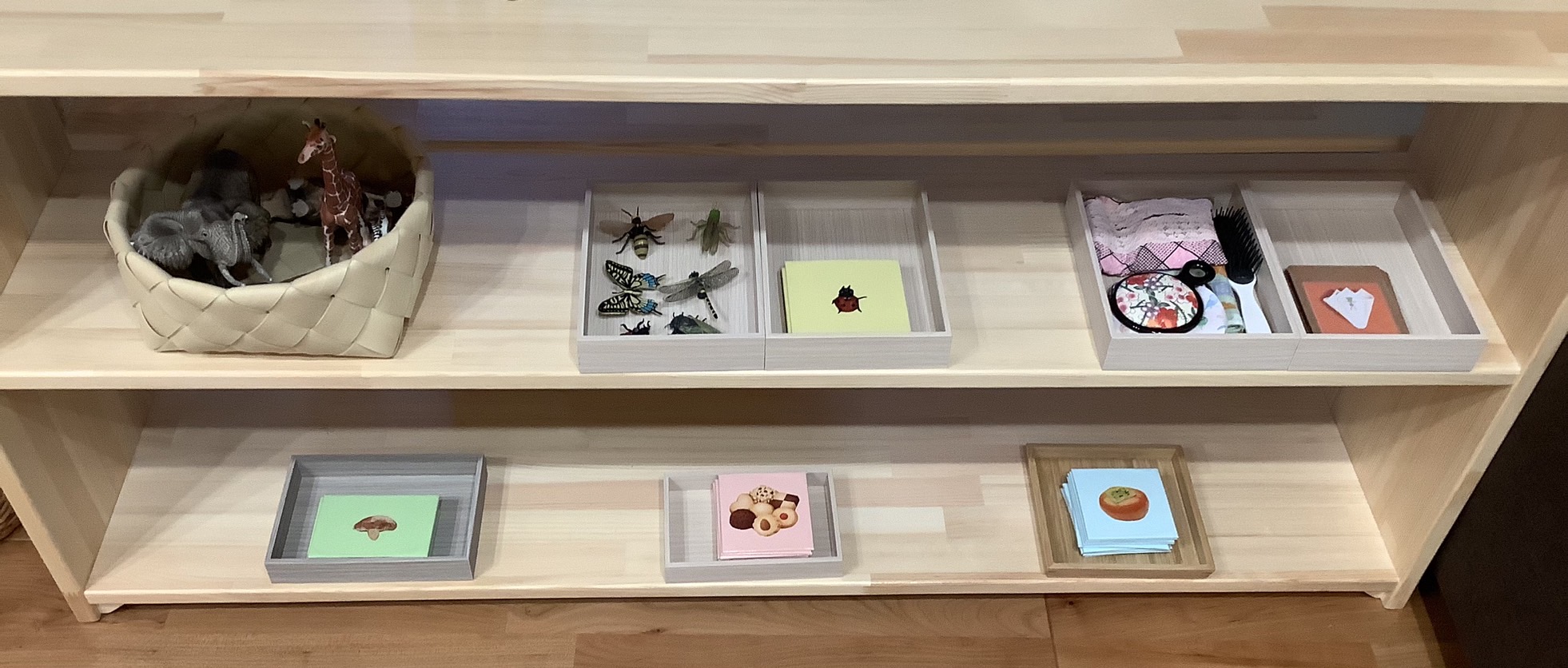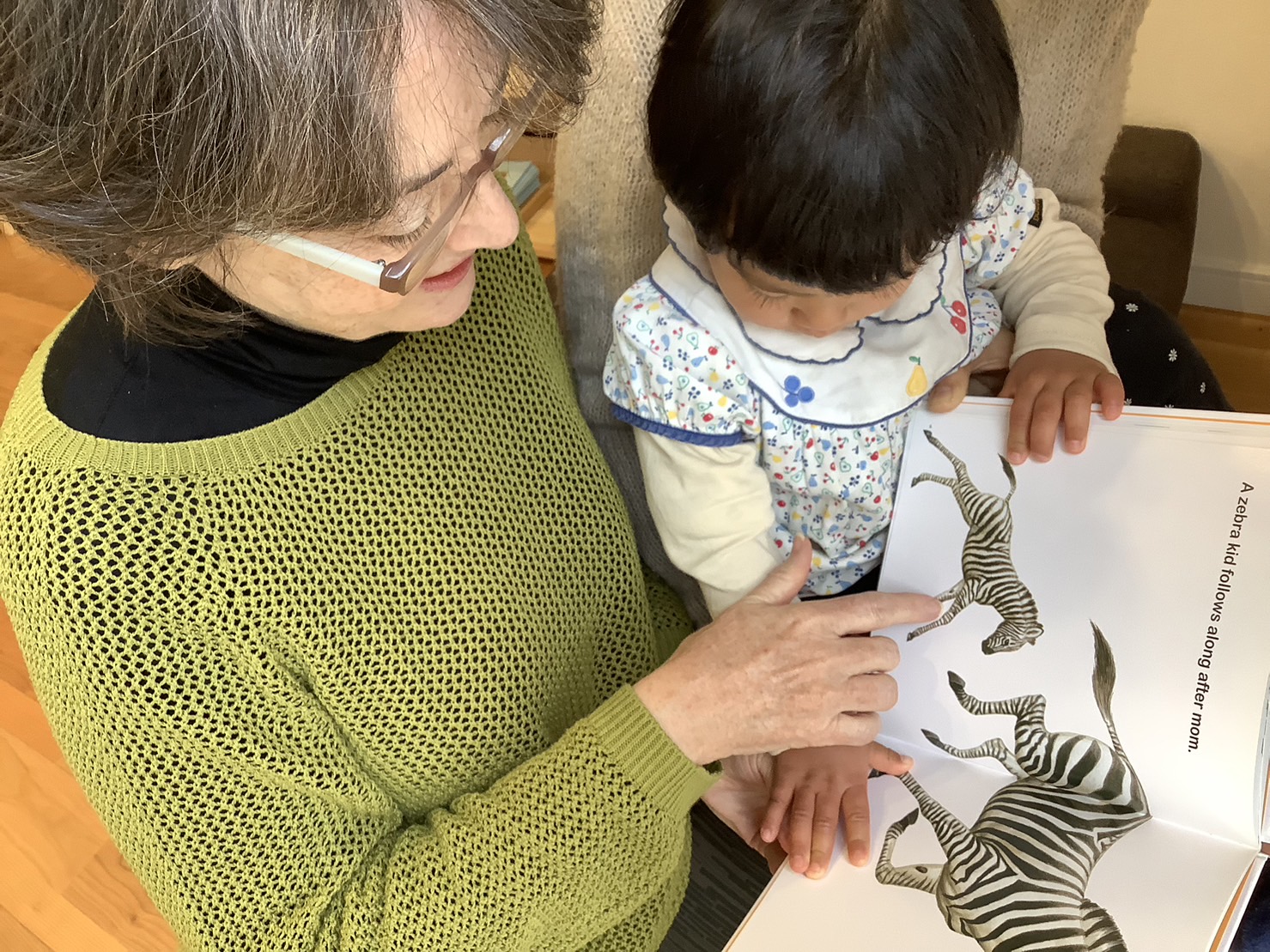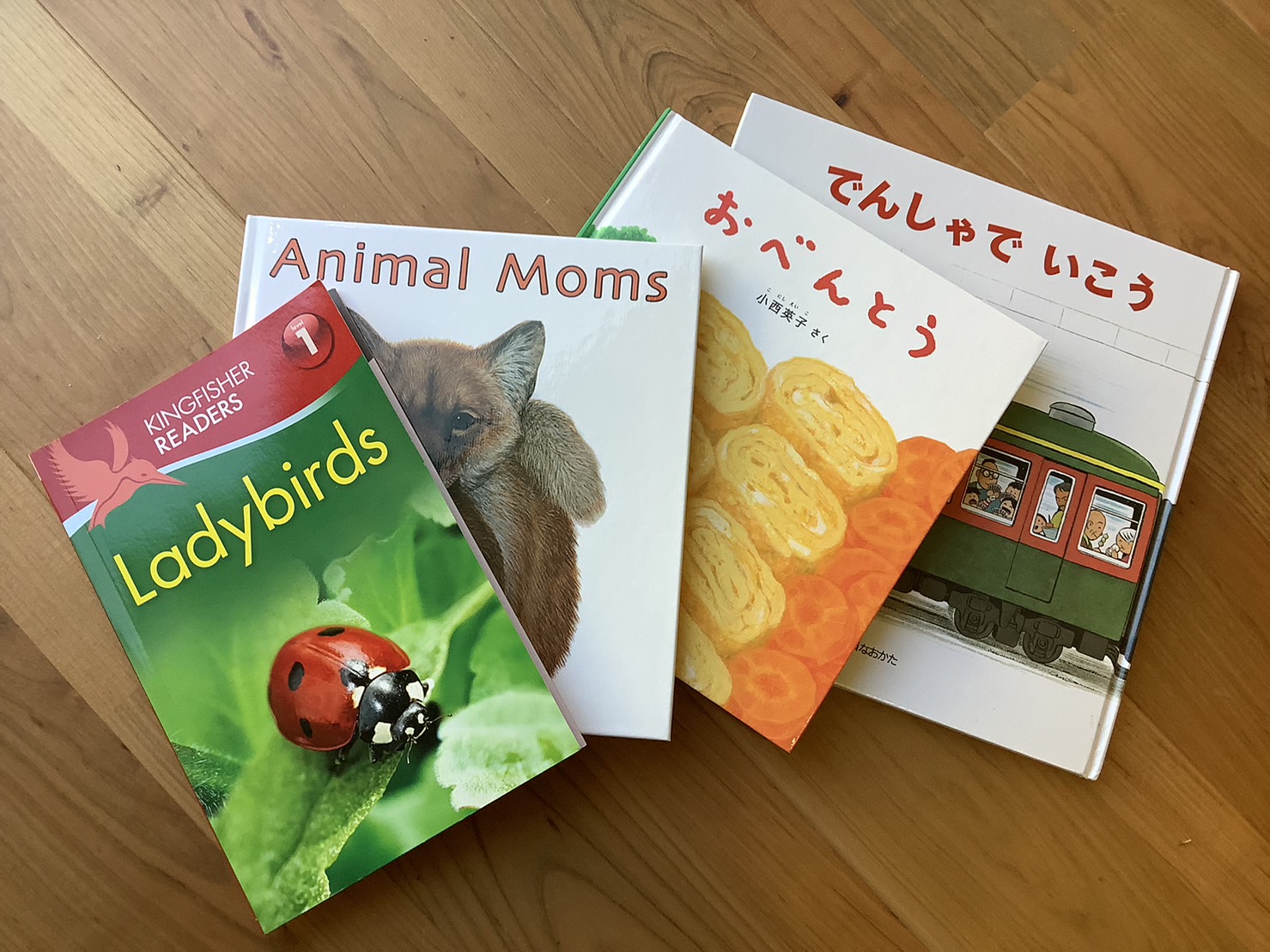- 語彙拡充のために日常的に大人がたくさん語りかけます
- 子どもの話に耳を傾けます。言葉の訂正はせず、子どもの話したい欲求に応えます
- 言語の教材を使って語彙の拡充をします
例えば以下のような教材を使います-
言語練習
実物やレプリカを用いて言葉の練習をします
-
概念の一般化
カードとレプリカを用い、平面の絵と立体が同じものを指すことを練習します
具体物から抽象化への理解を促します -
言語カード
抽象化への理解が進んだ子どもにはカードを用いて沢山の言語を紹介します
この時期の子ども達は大人でも知らないような複雑な言葉でもぐんぐん吸収します。私たちは数多くのカードを用意し、子どもの語彙の拡充を援助します
-
言語練習
- 絵本の読み聞かせをします
日本語と英語の絵本の読み聞かせをします。会話とは異なる書き言葉に触れ、詩や俳句など抽象的な表現や自然現象を理解し、日本や外国の伝統文化を絵本を通して学びます。何より日本語と英語で読書自体を楽しみます。
子どもの混乱を避けるため、現実に根差した絵本を用います。熊さんがおしゃべりする絵本は可愛いのですが用いません。現実と抽象の区別の付かないこの時期の子どもには、まず現実生活を理解するようにします。
- リズムに合わせて歌を歌ったり手遊びをしたりします
歌やリズムの中で沢山の言葉に触れます。大人はわかりやすく、ゆっくり、はっきり歌います。
もちろん子どもも一緒に歌います。 - 自己表現の場を設けます
子どもの話したい欲求は喃語(あー、うーなど)を話す生後6か月頃から始まっています。私達は一方的に話すのではなく、子どもの話に注意深く耳を傾け、必要に応じて言葉を補いながら、子どもがたくさん話せる環境を作ります。また「昨日公園でどんぐり拾ったことを皆に話してくれる?」と言った言葉かけをして、他の子ども達や大人の前でも話す機会を作ります。

- Guides engage in frequent verbal communication.
- Guides listen to children's stories, responding to their communication needs without correcting their language.
- Guides also use language materials to expand children’s vocabulary, as follows:
-
Using real objects or replicas for language exercises.
-
Using cards and replicas to practice identifying the same object in both two-dimensional and three-dimensional forms, encouraging the transition from concrete to abstract understanding.
-
Introducing numerous words using cards for children who have advanced in understanding abstraction.

-
- We conduct reading aloud sessions with picture books.
Reading Japanese and English picture books aloud exposes children to written language. They learn abstract expressions, experience poetic forms like haiku, understand natural phenomena, and explore traditional cultures from Japan and other countries through picture books. Most importantly, they enjoy reading books in both Japanese and English.
To avoid confusion, we use picture books rooted in reality. Not books built on fantasy. No talking bears or flying dragons. Because during this period, children cannot distinguish between reality and abstraction. We focus on helping them understand the reality of daily life first.
- We sing songs and engage in fingerplays.
Through songs and rhythm, children encounter numerous words. Guides sing clearly and slowly for children to better understand.
Children also sing along. - We provide opportunities for self-expression.
The desire for self-expression begins with babbling (e.g., "ah," "oo") around six months of age. At our Children’s House, children can talk a lot because guides listen to their stories, supplement words as needed. We encourage children to speak in front of others by gently prompting them with phrases like, "Can you tell everyone about picking up acorns at the park yesterday?"
